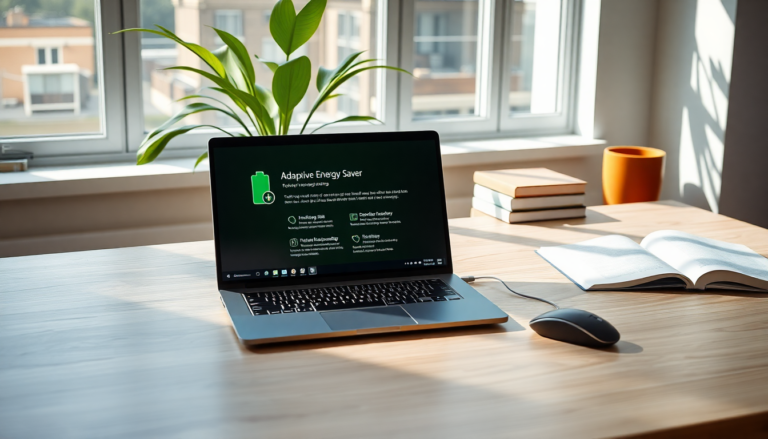Argomenti trattati
As technology advances, the need for efficient and effective battery management in laptops is more crucial than ever. Microsoft is stepping up to the plate with innovative solutions designed to extend battery life and enhance the overall user experience. After all, who hasn’t felt a wave of anxiety when their laptop starts to run low on power, especially when there’s no charging outlet in sight? Let’s dive into the details of this exciting new technology and explore what it means for the future of personal computing.
Introducing Microsoft’s Groundbreaking Technology
Recently, Microsoft announced a revolutionary “self-healing” technology for PCs, now available in the Windows 11 Release Preview Channel. This cutting-edge feature aims to optimize performance while extending battery life—especially in situations where conserving power is essential. Complementing this is a new experimental addition called the adaptive energy saver, which is drawing attention for its ability to change the game in how we manage power consumption on our devices.
So, how does the adaptive energy saver work? It kicks into action by activating power-saving modes when it detects that your laptop is idle or running in a low-demand state. Traditionally, users might notice their screen dimming as a warning sign of a low battery, which usually sends them scrambling for a power source. However, this innovative feature goes beyond mere notifications; it actively manages background processes to optimize power usage. For example, it can pause file synchronization, halt non-essential updates, and even disable transparency effects—all aimed at saving battery life without sacrificing user experience.
Understanding the Mechanics of Adaptive Energy Saver
The technology behind the adaptive energy saver is quite sophisticated. Unlike conventional methods that simply dim the screen, this approach continuously evaluates the laptop’s activity and intelligently adjusts settings to enhance battery performance. Think of it as a smart assistant that limits the operation of background applications that aren’t critical, ensuring that essential processes receive the necessary power while less important functions are temporarily put on hold.
What’s particularly impressive is that this feature is designed to operate seamlessly, allowing users to work longer without the distraction of a dimming screen or the stress that often comes with low battery warnings. It represents a proactive approach to energy management, striking a better balance between productivity and power conservation.
What This Means for Users and Future Prospects
While the adaptive energy saver technology is still in its infancy, its introduction marks a significant leap in how we interact with our laptops. Users will need to opt-in to activate this feature manually, which shows that Microsoft values user control over their battery-saving options. Isn’t it refreshing to have that kind of flexibility?
Furthermore, advancements in laptop processors, like Qualcomm’s Snapdragon and Intel’s Core Ultra Series, are already providing extended battery life, often lasting through most of the day. This development has somewhat reduced the urgency for battery-saving technologies. However, the adaptive energy saver is a welcome enhancement that allows users to maximize their devices without the constant worry of running out of power.
Looking ahead, the integration of such technologies will undoubtedly continue to evolve, reflecting our growing need for efficiency in an increasingly mobile world. Battery life optimization will remain a priority for tech companies, and with Microsoft’s innovative strides, we’re witnessing the dawn of more sustainable computing solutions.

